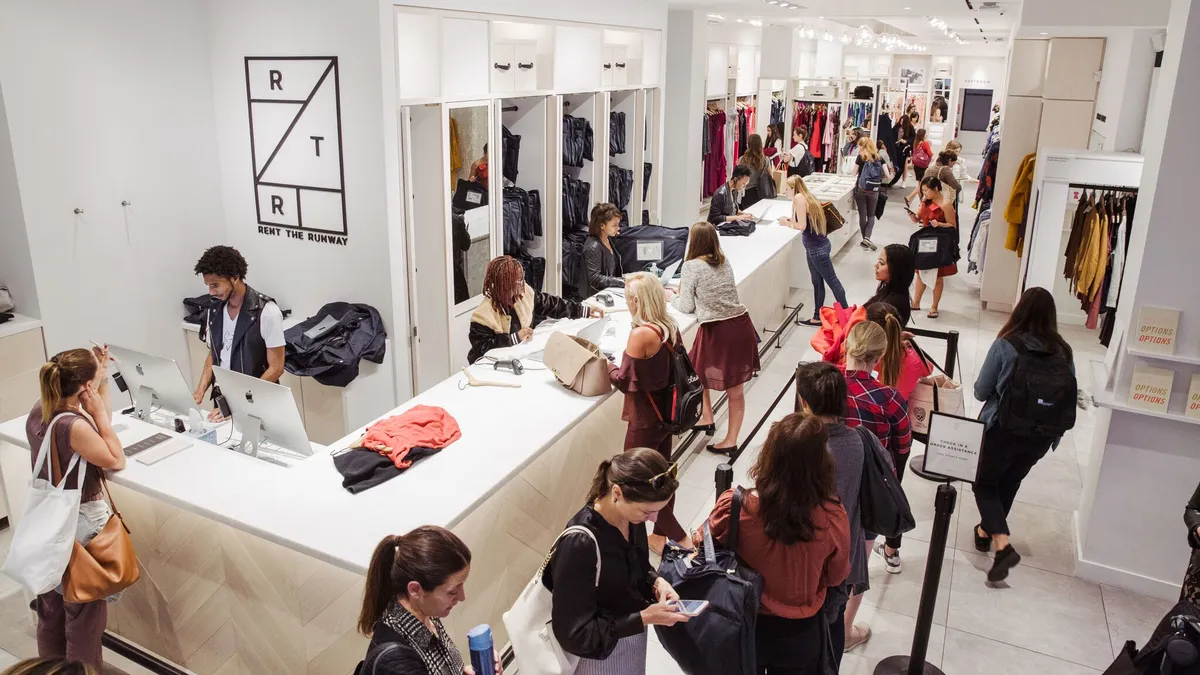Dive Brief:
-
Rent the Runway on Monday announced the filing of a Form S-1 registration statement with the U.S. Securities and Exchange Commission related to its previously announced initial public offering. The company will list its stock on the Nasdaq Global Select Market under the ticker symbol "RENT." The number of shares and their price range haven't been determined, per a company press release.
-
Like other digital-first retailers joining the public markets lately, the apparel rental retailer has been losing money. Its 2020 net loss widened to $171.1 million, from $153.9 million in 2019; in the first six months of this year net loss reached $84.7 million, per the S-1 file.
-
In its prospectus, the company counts consumers' interest in sustainability, the normalization of secondhand clothing and the growth of e-commerce, particularly in apparel, as factors in its favor. The vagaries of the fashion industry and continued pandemic-related pressures are counted among its challenges, and the company warns that it has "a history of losses" and that it "may be unable to achieve or sustain profitability."
Dive Insight:
Rent the Runway's disruptive concept is its notion of a "closet in a cloud," with apparel owned by the company but accessible to all its subscribers.
"We built the world's first and largest shared designer closet — what we call the Closet in the Cloud — with over 18,000 styles by over 750 designer brands that has transformed the way women get dressed by letting them wear whatever they want, without having to own it," the company said in its filing.
Those customers are key to its success — in the first half of this year, they generated 83% of its total revenue, per its prospectus. The company boasts 2.5 million lifetime customers across its offerings, and as of July 31 had 126,841 total active or paused subscribers.
It's taken some experimentation to achieve that, as the apparel rental company has tweaked its subscription offer several ways since its 2009 founding. Rent the Runway launched more affordable and more flexible subscription tiers; dropped "unlimited" plans; and added children's clothing and, with West Elm, home decor. This year the company opened its secondhand clothing online sales to nonsubscribers.
The site has also sought to ease some of the logistical challenges of e-commerce by partnering with Nordstrom and WeWork to establish physical locations for pickup and dropoff and with hotels on delivery for travelers. Last year secondhand items could be found in Nordstrom Rack stores, but it also closed its own brick-and-mortar operations.
The pandemic stymied the company's momentum and continues to loom over its prospects, per the prospectus. Its number of active subscribers last year fell "because of the decrease in special events, social gatherings and interactions outside the home" and a "significant number of subscribers paused or canceled their subscriptions or downgraded to lower-priced plans." With less engagement from subscribers, it collected less data and got less out of its organic marketing, the company also said.















